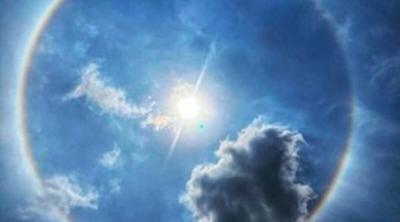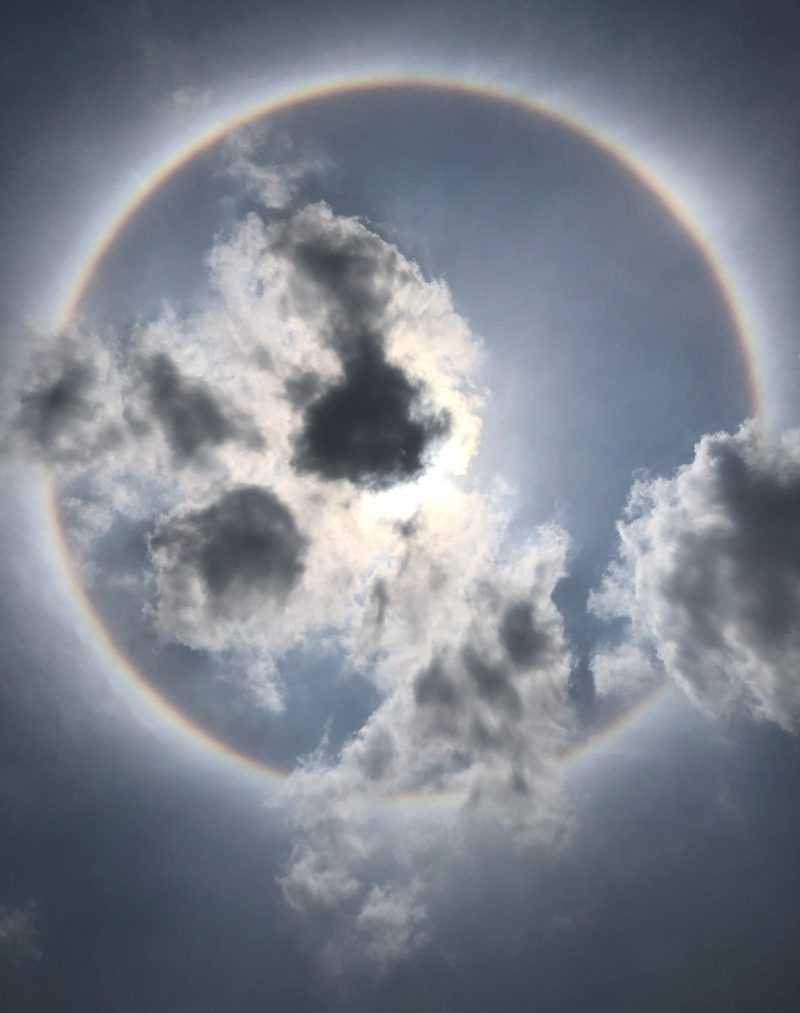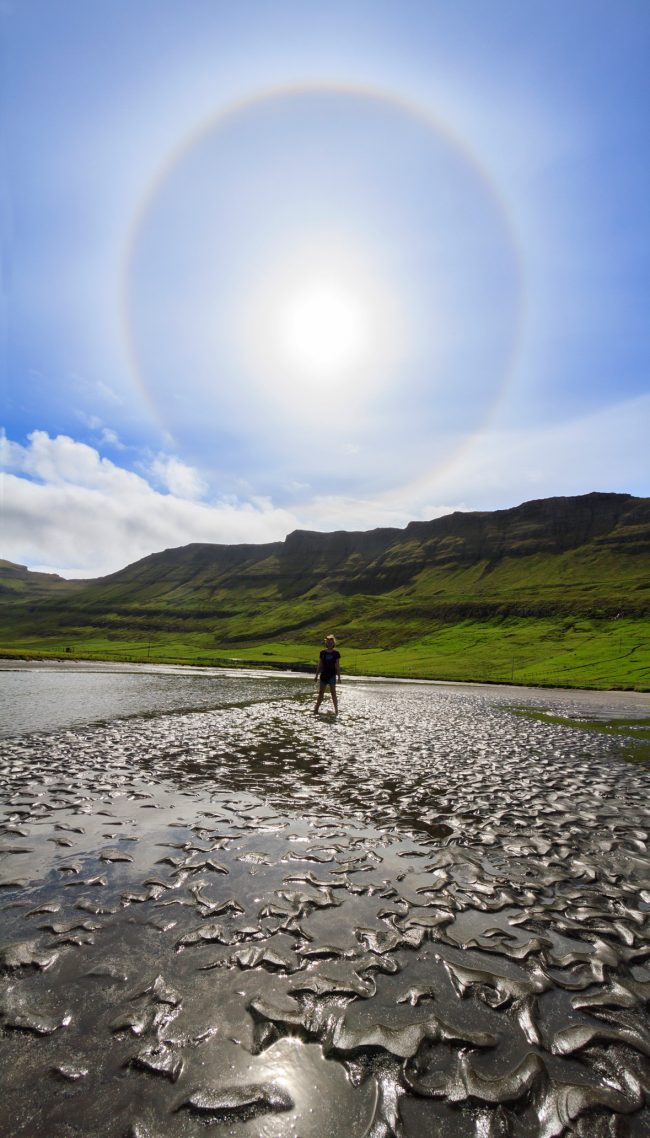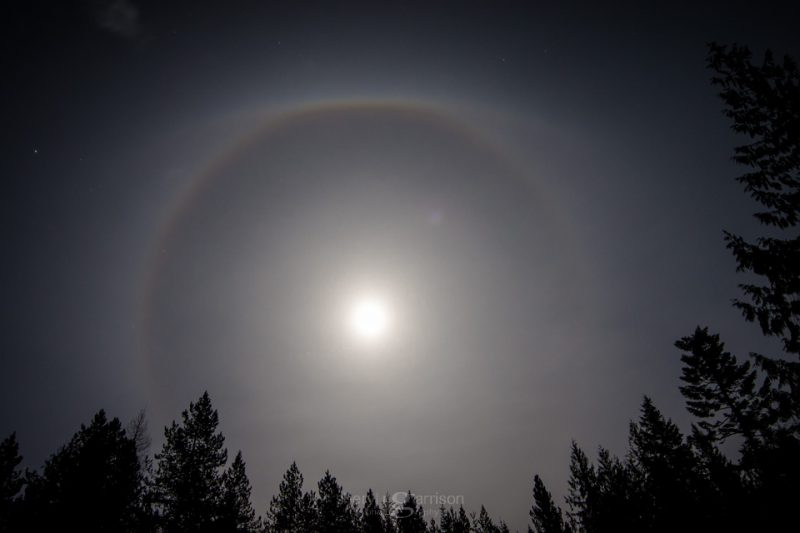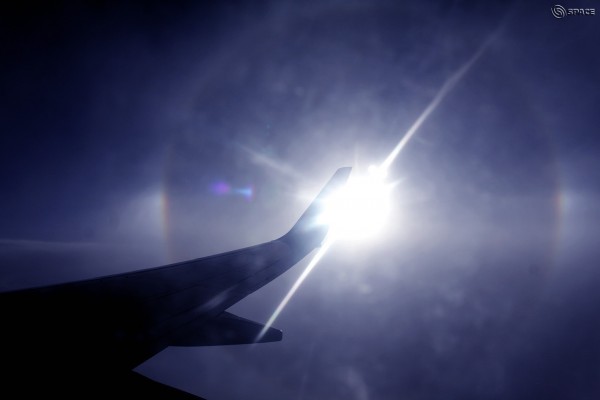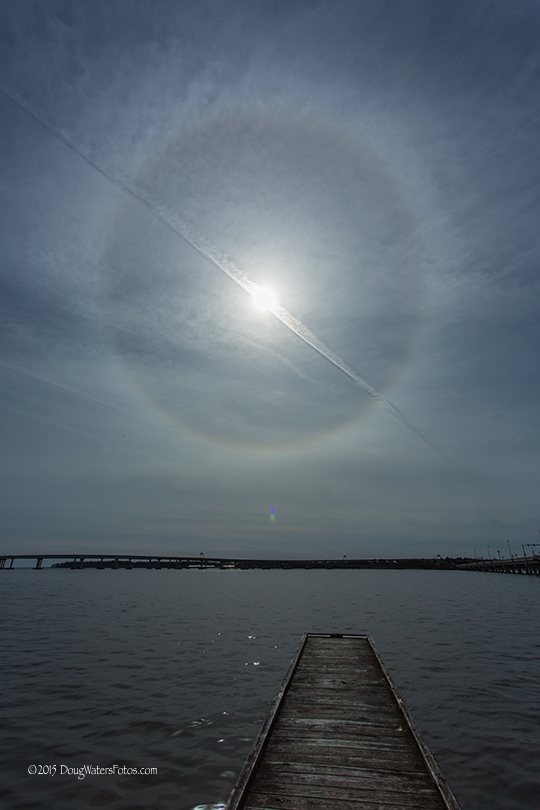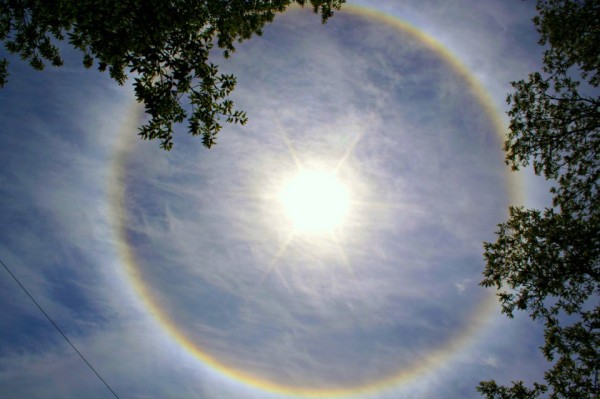View at EarthSky Community Photos. | Anubha Singh in Hyderabad, India caught this beautiful 22-degree halo around the sun on June 2, 2021. Thank you, Anubha!
What causes halos?
Have you ever stepped outside and looked up and noticed that there was a ring, perhaps you thought it was a 360 degree rainbow around the sun? Here at the WDRB Weather Team we often get pictures of this phenomenon and wondering what it is and how it happens. These are called halos, and they also can happen around the moon too. Scientists call them 22-degree halos. They bear this name because the radius of the circle around the sun or moon is approximately 22 degrees.
There’s an old weather saying: ring around the moon means rain soon. There’s truth to this saying, because high cirrus clouds often come before a storm. Notice in these photos that the sky looks fairly clear. After all, you can see the sun or moon. And yet halos are a sign of high, thin cirrus clouds drifting 20,000 feet (6 km) or more above our heads.
These clouds contain millions of tiny ice crystals. The halos you see are caused by both refraction, or splitting of light, and also by reflection, or glints of light from these ice crystals. The crystals have to be oriented and positioned just so with respect to your eye, in order for the halo to appear.
That’s why, like rainbows, halos around the sun – or moon – are personal. Everyone sees their own particular halo, made by their own particular ice crystals, which are different from the ice crystals making the halo of the person standing next to you.
Take care when photographing solar halos. Pointing a camera directly at the unobscured sun can damage it. Never look directly at the sun, even when it is visible through clouds.
Eliot Herman wrote on May 5, 2018: “This shows the change that occurred over 7 minutes as a lunar halo emerged. It then persisted for about 40 minutes and disappeared with increasing clouds. Although it appears the halo is forming from an odd shape, what is actually illuminated is the edge of the clouds just before the halo formed as the clouds drifted in front of the moon. But it does have a nice illusion of an odd-shaped halo then becoming round.”
Robert Green of London caught this glorious solar halo on August 12, 2017, from Suðuroy, Faroe Islands. His daughter Mia is standing beneath!
Are halos more common at high latitudes?
Earthsky.org asked Les Cowley of the website Atmospheric Optics if halos around the sun and moon are more frequently seen at high latitudes and less commonly seen closer to the equator. He said:
That’s a good question that is not easy to answer accurately because no halo frequency statistics are collected except in one or two mid-latitude European countries.
We need to distinguish between (a) halos formed by low level diamond dust during very cold weather and (b) halos formed by ice crystals in high cirrus cloud.
Obviously (a) halos only occur in polar regions or countries with very cold winters (Canada for example is not high latitude).
(b) Halos can occur anywhere on the planet during winter or summer. Their frequency depends on the frequency of cirrus coverage and whether it has had a history such that it contains halo forming crystals. The latter is hard to predict. For example, there are major differences in halo frequencies and types of halos across even 200 miles [300 km] in the U.K.
Sheryl R. Garrison in Idaho caught the November 14, 2016, supermoon. She wrote: “I’ve caught lunar halos before but tonight was a first for me to catch one with an arc … The arc didn’t last for long, just enough time for me to grab the tripod.” By the way, this is a special type of 22-degree lunar halo, called a circumscribed halo.
If you see a halo, notice this!
Because moonlight isn’t very bright, lunar halos are mostly colorless, but you might notice more red on the inside and more blue on the outside of the halo. These colors are more noticeable in halos around the sun. If you do see a halo around the moon or sun, notice that the inner edge is sharp, while the outer edge is more diffuse. Also, notice that the sky surrounding the halo is darker than the rest of the sky.
Sun halo and sundogs. Captured 37,000 feet up, over Bhopal, India, on October 3, 2015. Photo by CB Devgun.
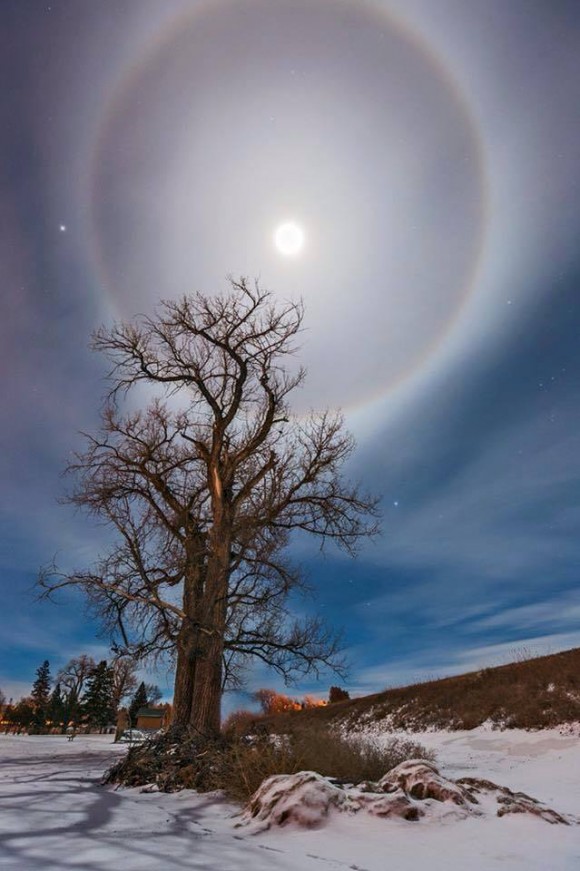
A moon halo in Mandan, North Dakota, by Marshall Lipp in February 2015.
Doug Waters in New Bern, North Carolina, caught this photo on February 4, 2015. He wrote: “High cirrus clouds from an approaching weather system presented the perfect opportunity for a halo to form around the sun, which appeared to be pierced by the contrail of a passing airliner.” Thanks for sharing your photo with EarthSky, Doug.
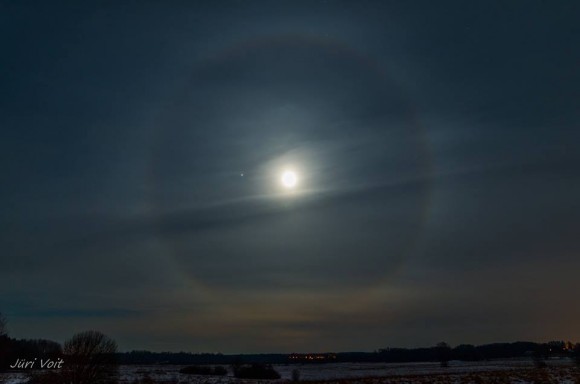
Jupiter and full moon within lunar halo on February 3, 2015. Seen from Estonia by EarthSky Facebook friend Jüri Voit. See more moon and Jupiter pics.
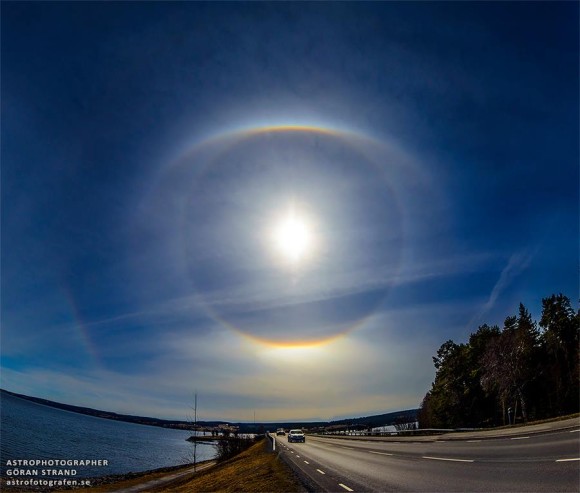
Halo around the sun, seen from Sweden on April 24, 2014, and captured by Fotograf Goran Strand.
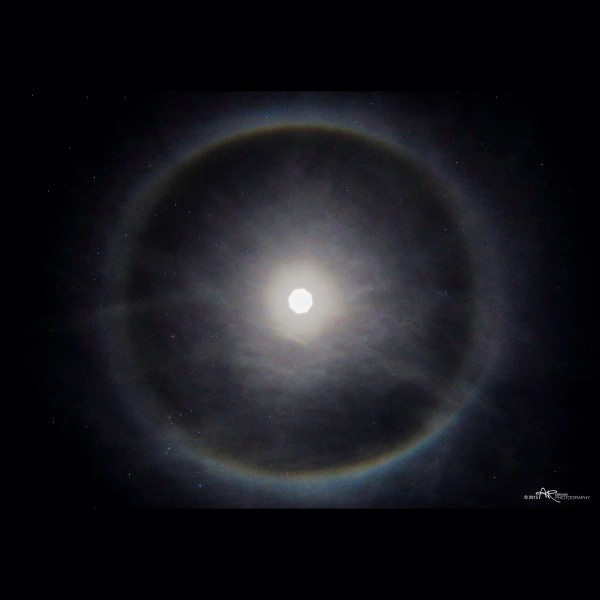
Moon halo captured by Aaron Robinson in Idaho Falls, Idaho, on January 30, 2015.

Abhinav Singhai captured this sun halo above wheat fields in November 2014. Visit Abhinav Singhai’s Flickr page.
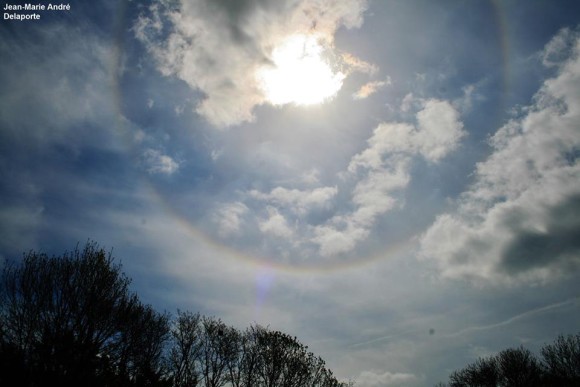
Jean Marie Andre Delaporte captured this image of a halo around the sun in Normandy, France, in April 2014.
Solar halo seen May 14, 2013, in Monmouth, New Jersey, as captured by EarthSky Facebook friend Stacey Baker-Bruno. Thank you, Stacey! See more photos of May 14, 2013, halo here.
Halos around the sun and moon are associated with storms. On the night Superstorm Sandy made landfall in 2012, we received photos of lunar halos from across the U.S., and even as far west in the U.S. as the state of Washington. EarthSky Facebook friend Susan Jensen in Odessa, Washington, saw and photographed this delicate halo, as Sandy was carving its path of destruction along the U.S. East Coast.
Lunar halo – with greenish northern lights on the left – as seen on the morning of October 8, 2012, by EarthSky Facebook friend Colin Chatfield in Saskatoon, Saskatchewan, Canada.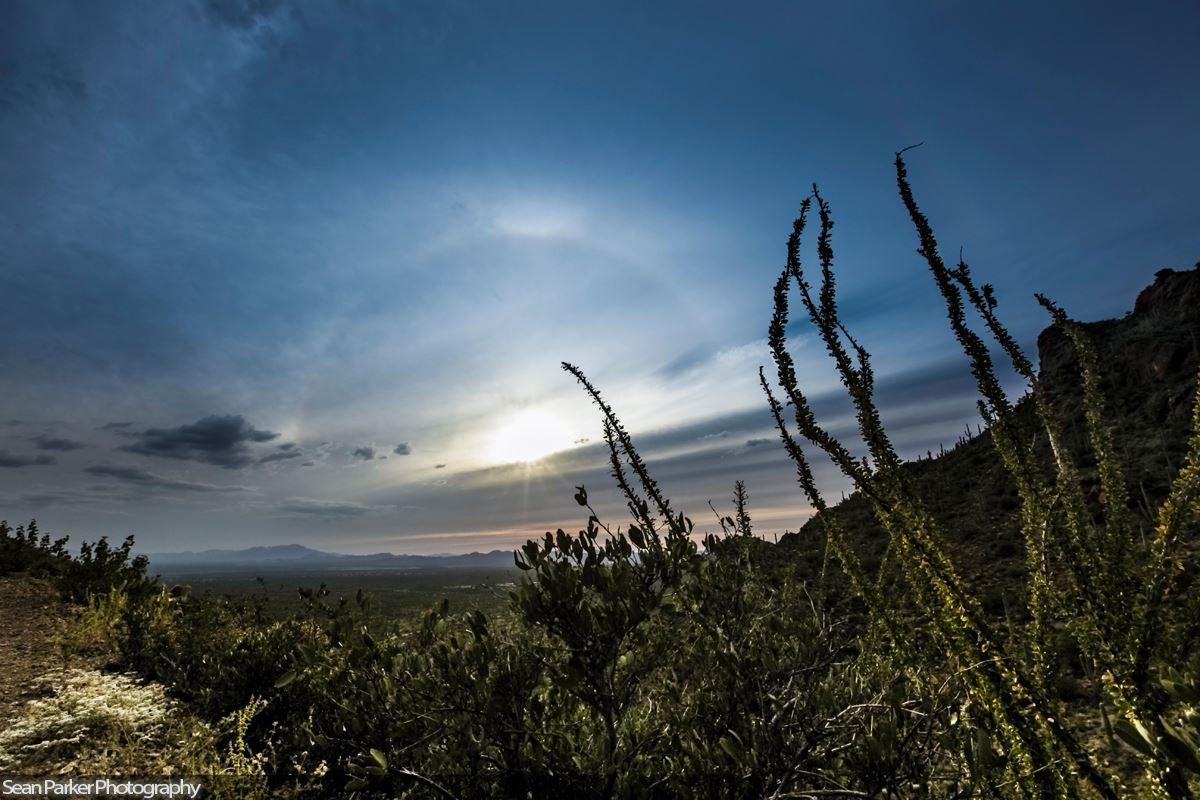
View larger. | Sun halo seen in Tucson, Arizona, in September 2012 by EarthSky Facebook friend Sean Parker Photography. Thank you, Sean! More from Sean here.
Bottom line: Halos around the sun or moon are caused by high, thin cirrus clouds drifting high above your head. Tiny ice crystals in Earth’s atmosphere create the halos. They do it by refracting and reflecting the light. Lunar halos are signs that storms are nearby.


